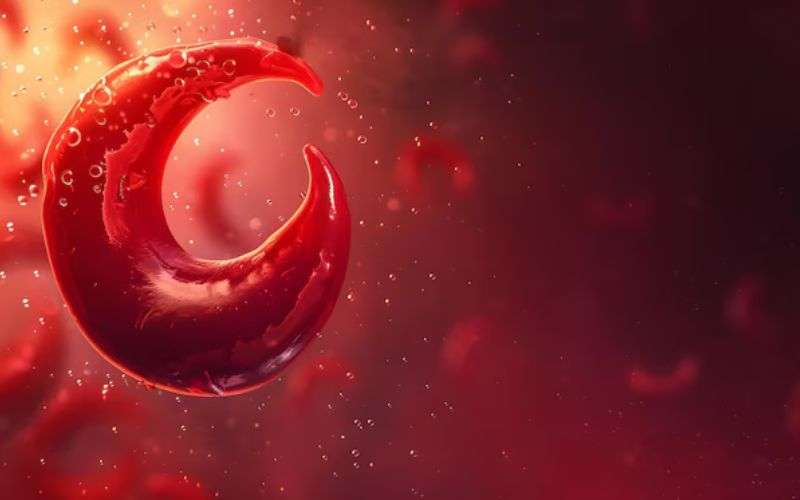Sickle Cell Anemia Treatment Cost in India

Contact Us
Frequently Asked Questions :
While most treatments are supportive, bone marrow transplant offers a potential cure in selected patients with a matched donor.
Yes. Many Indian hospitals have dedicated international desks that assist with visa, travel, and follow-up care.
Most patients stay in the hospital for 3–4 weeks, with complete immune recovery taking about 6 months to a year.

Sickle Cell Anemia is a lifelong genetic blood disorder that affects the shape and function of red blood cells. In people with this condition, red blood cells become rigid, sticky, and shaped like sickles or crescent moons. These cells die early, leaving a shortage of healthy red blood cells and blocking blood flow, which can cause pain and complications. In India, the disease is especially prevalent among tribal communities and in states like Madhya Pradesh, Chhattisgarh, Odisha, and Maharashtra. The good news is that India provides world-class care at a fraction of the global cost. Treatment in India typically ranges from $1,000 to $30,000 USD, depending on the approach and hospital chosen.
What is Sickle Cell Anemia?
Sickle Cell Anemia is a hereditary condition that arises when a person inherits two abnormal hemoglobin genes—one from each parent. Hemoglobin is the protein in red blood cells that carries oxygen. In people with this disease, abnormal hemoglobin causes red cells to deform and take on a sickle shape.
These sickle cells tend to clump together and get stuck in small blood vessels, blocking blood flow and leading to serious issues such as pain, stroke, and organ damage. These cells also die sooner than normal red blood cells, causing a continuous shortage.
Symptoms and Complications
Symptoms can vary in severity and often appear in early childhood. Common signs include:
- Chronic fatigue
- Episodes of severe pain, often in the chest, joints, or limbs (sickle cell crises)
- Swelling in the hands and feet
- Repeated infections due to spleen damage
- Delayed growth and puberty
- Vision problems
Long-term complications can include:
- Stroke
- Pulmonary hypertension
- Leg ulcers
- Gallstones
- Organ failure
Proper diagnosis and ongoing care can help prevent or manage many of these complications.
Diagnosis and Screening in India
Early diagnosis is vital for timely management. In India, Sickle Cell Anemia can be detected using:
- Hemoglobin electrophoresis
- High-performance liquid chromatography (HPLC)
- Genetic testing (when needed for confirmation)
These tests are affordable in India and cost approximately $20 to $100 USD. Many government and private hospitals also offer free newborn screening programs in high-risk regions.
Treatment Options Available in India
Although there’s no universal cure for Sickle Cell Anemia, a variety of treatments help manage symptoms, reduce complications, and improve quality of life:
- Hydroxyurea therapy: Reduces the frequency of pain crises and need for blood transfusions
- Blood transfusions: Used for severe anemia or to prevent stroke, particularly in children
- Pain management: Nonsteroidal anti-inflammatory drugs (NSAIDs) or opioids during crises
- Antibiotics and vaccines: To prevent infections like pneumonia and meningitis
- Folic acid supplements: To support red blood cell production
- Regular check-ups: Monitoring organ function and screening for complications
Most patients need a combination of these treatments throughout their life.
Bone Marrow Transplant – A Potential Cure
Bone marrow transplant (BMT), also called a stem cell transplant, is the only known cure for Sickle Cell Anemia. In this procedure, the patient’s faulty bone marrow is replaced with healthy stem cells from a compatible donor. The new marrow then produces healthy red blood cells.
BMT is typically recommended for children and young adults with severe symptoms and a matched donor. It’s a complex procedure but offers the chance for a long-term cure.
Cost in India:
- Matched Sibling Donor: $12,000–18,000 USD
- Haploidentical (Half-Matched) Donor: $24,000–36,000 USD
- Unrelated Donor: $45,000–70,000 USD
Success rates are high when done early and in the right setting. Hospitals like Fortis, Apollo, and CMC Vellore have dedicated transplant units with excellent outcomes.
Cost Breakdown for Sickle Cell Anemia Treatment in India
Here’s a general breakdown of treatment-related expenses:
- Outpatient consultation & blood tests: $50–200 USD
- Hydroxyurea therapy (monthly): $20–80 USD
- Blood transfusions (per session): $50–100 USD
- Pain relief medications (monthly): $30–100 USD
- Bone marrow transplant (if chosen): $12,000–70,000 USD
The total cost will depend on treatment duration, hospital type, and the patient’s specific condition.
Why India is a Preferred Destination for Treatment
India is increasingly chosen by international patients for the treatment of complex blood disorders like Sickle Cell Anemia due to:
- Affordable yet advanced care: Significant cost savings without compromising quality
- Highly skilled hematologists and transplant specialists
- Availability of FDA-approved medications and modern diagnostic tools
- Multilingual support teams and international patient assistance
- Accredited hospitals like Fortis, Apollo, Max, and CMC Vellore
These features make India a top destination for both domestic and global patients.
If you or a loved one is dealing with Sickle Cell Anemia, reach out to a leading hematologist in India for a personalized treatment plan and cost estimate. Affordable, advanced, and compassionate care is just a consultation away